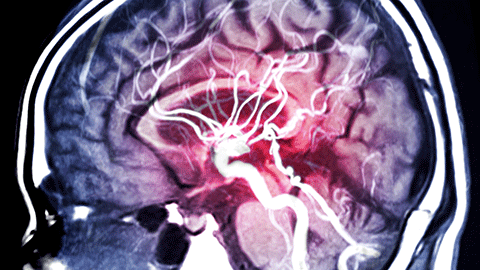
This story with a description of stroke, how it affects function, and the role of massage therapy is a complicated situation that also involves ethical boundaries, communication skills, and some ideas for options that practitioners might pursue for their clients with central nervous system injury.


This episode sponsored by Anatomy Trains, Yomassage, and Books of Discovery.
00:00 Speaker 1: Ruth Werner's best-selling book, A Massage Therapist's Guide to Pathology is a highly regarded comprehensive resource that sets the standard for pathology education. Written for massage therapy students and practitioners, this ground-breaking resource serves up a comprehensive review of the path of physiology, signs, symptoms and treatment of more than 500 diseases and disorders. Learn more at booksofdiscovery.com.
[music]
00:39 Ruth Werner: Hi, and welcome to I Have A Client Who, pathology conversations with Ruth Werner, the podcast where I will discuss your real life stories about clients with conditions that are perplexing or confusing. I'm Ruth Werner, author of A Massage Therapist's Guide to Pathology, and I have spent decades studying, writing about, and teaching about where massage therapy intersects with diseases and conditions that might limit our client's health. We almost always have something good to offer, even with our most challenged clients, but we need to figure out a way to do that safely, effectively and within our scope of practice, and sometimes, as we have all learned, that is harder than it looks.
01:25 RW: In this episode, we will talk about a situation that revolves around a pathologic condition, but it goes deeper than that. This comes from a massage therapist in Oklahoma who shares this story: "I have a client who had a stroke six years ago. About six months later, he reached out to me for weekly sessions in his home. He used a wheelchair with the goal of graduating to a walker. The stroke affected his right side. He never regained the use of his right arm and has only limited engagement with his right leg. About 18 months into his rehabilitation, he asked about his progress and one of his doctors told him that, "This is likely as good as it's going to get." In that appointment, his mindset changed. He essentially gave up trying to regain full use of his right side. I'm still working with him, but I seem to be at a loss to urge goals for improvement rather than just maintenance. Wow! There's a lot to unpack here, but before we dig in, I just wanna say thanks to this massage therapist from Oklahoma who shared their story and I wanna invite you to do the same. Stay tuned for instructions on how to do that at the end of the podcast. For now, let's take a peek at stroke. This may be a review for some of you, but some may be really grateful to hear this information again.
02:54 RW: So a stroke is the result of something bad happening inside the central nervous system. Usually we talk about this happening in the brain, but there is such a thing as spinal cord stroke as well. There are sort of two different versions or types of stroke. One has to do with a blockage, and the other has to do with a bleed. The blockage type, called ischemic strokes, are much more common and so there's a clot or some debris that gets into a small artery or arterial inside the brain, blocks blood flow and then the tissue downstream from that dies, and that's called an ischemic stroke. When we have a hemorrhagic stroke, then there is an event where there is a burst, an artery ruptures, and again, all the material downstream that should have been supplied by that blood vessel will now suffer from lack of oxygen. But again, ischemic strokes are by far the more common version in the United States.
03:55 RW: I'm gonna read just a little bit from my textbook about statistics so we have a bit of context here: "Stroke is the fifth leading cause of death in the United States. It is the leading cause of all adult disability. Men have strokes more than women and about 795,000 people have a stroke each year in the United States. About five million stroke survivors are living in this country today." So with five million stroke survivors in the United States, the chances of your having one or more of them as clients are pretty good. To think a little bit about the pathophysiology of stroke, we have to go back to what we understand about tissues in the central nervous system. So, it used to be, and this was the case, this was our understanding when I went to... Way back when I went to massage school, it used to be that we thought that central nervous system injury was permanent and irreversible, and that once there was tissue damage inside the brain or the spinal cord, then the results of that in the rest of the body were permanent and would never change.
05:10 RW: And we have learned in the years since then that that turns out not to be true. The nerve tissue, the neurons in the central nervous system, are capable of adaptation and change. They can grow new nerve endings, they can create new synapses. This quality is called neuro-plasticity, and it is a finding that has completely changed what we understand about the prognosis for people who have had central nervous system injury, whether that's a stroke, or a traumatic brain injury, or a spinal cord injury, or even something related to a disease or a condition like multiple sclerosis. So our capacity to retrain and heal and improve from strokes is better now than it ever has been. The other thing I wanna point out about what happens in the rest of the body when someone's had a nervous system injury is that one of the things that happens when there's... It's called an upper motor neuron injury, when there's damage to motor neurons in the brain and the spinal cord, is that this results in a phenomenon called spasticity in the body. And what that just means is that muscle tension gets higher, and higher, and higher, and higher, and in the battle in muscle tension between flexors and extensors, flexors win.
06:35 RW: So if you picture in your mind maybe someone you've known or someone you've seen who has had a central nervous system injury, and you think about their hands, what you will notice is that their fingers curl in and their wrists curl in, and their elbows bend and their shoulders come forward, and their trunk tends to bend and this is a reflection of that spasticity process, and that is led by changes in the central nervous system to which we, massage therapists, have no access. However, that tendency toward spasticity, inflection, and the locking up and progressive loss of function. Progressive is the key word there. That progressive loss of function as the body folds in on itself is contributed to by proprioceptors.
07:27 RW: So you'll remember that we have proprioceptors. These are sensory neurons that supply our muscles and our fascia. And our tendons and our joint capsules, and lots and lots of other tissues, and the job of proprioceptors is to provide our sense of position in space. They tell us where we are in space and how much tension it takes for us to stay there, and that is part of what sets our muscle tone. And here's the thing about proprioceptors, they are creatures of habit. They get used to certain habits, postural habits, movement habits. These patterns, some of which are led by our central nervous system and some of which are just led by the way we interact with gravity. And the proprioceptors will assume that this is our normal, and sometimes proprioceptors get it wrong. So one of the reasons... Not the only reason, but a reason that spasticity progresses in central nervous system injury is the contribution of proprioceptors that say, "Oh okay, we live bent now so this is our normal." And there is some capacity for undoing some of those reflexes with manual therapies. How much capacity is unknown. How long those changes might last, not clear, but we'll come back and talk about this in a little bit when I talk about what this massage therapist might be able to do for her client.
08:55 RW: So that's a little brief overview of stroke and neuroplasticity. Now, I wanna talk about communication skills because that turns out to be a huge factor, at least from this description of this client's experience. So he had a stroke. He lost a lot of the use and strength and capacity with the right side of his body, and for many of us, that's the dominant side and that's a big loss. And he worked at his rehab for a year and a half. He got some kind of improvement in his leg and not much improvement in his arm, and the therapist tells me he was able to use a walker at least for limited periods of time. But when he checked in with his doctor about how much more improvement he might expect, his doctors basically just told him... Let me backtrack. What he understood his doctor to say is, "This is likely as good as it's going to get." We don't know what the words were that the doctor shared. What we know is how the client heard it, which was, you're done. This is as good as it's gonna get. You're not gonna get any better. And that appeared to have a really profound impact on this client's attitudes about his health and his capacity for improving his function.
10:12 RW: Given what we know about neuroplasticity, and another point that I didn't make is that, that capacity for improvement persists for long periods of time. There's not just a short window of opportunity for improvement with central nervous system injuries. It is a little surprising to me that this was the communication that he got from his doctor, and it may well be that his doctor was trying to be realistic and not give him a false sense of what he might expect. It may well be that the doctor was trying to be really compassionate and couch these words in language around keeping up your maintenance and stay as healthy as you can and lean into the power that you have, but what the client heard was, this is as good as it's gonna get, and it's not gonna get any better. And so I'd like us to take a minute to reflect on the power of those words and on the kinds of words that might come out of our mouth when we're working with people who have chronic conditions that may not have a great prognosis. Our job in terms of helping people stay positively connected to their body, and the health and resilience, and strength and capacity that they have is to discuss it in realistic terms, but also in terms that really emphasize people's power and strength.
11:48 RW: And so there're all kinds of ways to do that and it may take some practice, and it may take some sort of increased awareness of what comes out of our mouth when we communicate to our clients about their health, but I'd like to encourage us to do this. And what I wanna encourage, this massage therapist who shared this story to do, and what I wanna encourage any listener who ever has the opportunity to work with a client who's had central nervous system injuries to do is to go back and think about that proprioceptive piece. So even for this client whose stroke was six years ago, if this therapist were to go and, say, determine from him what his goals are, and it sounds like he's, at least at the point of the story, he was most interested in what he could regain with his arm, is to maybe with his permission, work with his hand, work with the musculature in his hand, work with the extensors in his hand. In other words, ask him to work to try to extend his fingers against resistance and then to relax and then to try it again in order to see if we can make any kinds of changes about range of motion, or strength, or function in his hand.
13:09 RW: And that's just an example, but what we see is working with proprioceptors and that might take the shape of work that looks like proprioceptive neuromuscular facilitation, or muscle energy technique, or maybe you learned some similar techniques under different titles. We can see this happen. I have had limited opportunities to work with people with central nervous system injury, but whenever I have had, I've tried this kind of work, and at least in the short run, you can see some substantial changes. And it's very, very exciting so I wanna really encourage our listeners, working within your client's goals and within their tolerance for strength, and pressure, and intensity. Maybe test what their capacity really is and if your client is into it and wants to contribute to our body of knowledge, maybe consider writing a case report about what you find out. The capacity for massage therapy and other manual therapies to be helpful for people who have had central nervous system injuries, I think, is much greater than we give it credit for. There's not a lot of research about this. There's a limited amount of research about Thai massage for people who've been through stroke, and that's a type of massage that really focuses on stretching.
14:30 RW: There's not a lot else. But we all probably have stories. I have a few, of seeing people with central nervous system injury have at least temporary improvement in function after having received massage. We need to get this documented. So if I were ever to take up a practice again, I would love to build a specialty in working with people who have had central nervous system injuries, just because I think that the capacity for massage therapy to be helpful here is like an untrodden field of snow that I think there's a lot we can do, and we have just begun to figure out what our work could bring for these clients. They're eager, they're enthusiastic consumers of massage therapy. Let's see what we can do to help and let's document what really happens. So to our massage therapist who has this client, I give you all kinds of encouragement to work with him for his depression and his anxiety. We know that massage therapy can be helpful for that, and we know it's hard to live with a long-term health condition and not have depression impact or ability to take care of ourselves. So you work with that, but also work with him proprioceptively. See what happens. The risks are low, the possible benefits are great. And you may also be able to develop an, I Have a Client Who story that turns into a case report and I would love to help you do that.
16:00 RW: Hey everybody, thanks for listening to I Have A Client Who, Pathology Conversations with Ruth Werner. Remember, you can send me your I Have A Client Who stories to ihaveaclientwho@abmp.com. That's ihaveaclientwho all one word, all lower case @abmp.com. I can't wait to see what you send me, and I'll see you next time.
[music]
16:31 S1: Yomassage is now offering ABMP podcast listeners $100 off their 25-hour certification from now until September 1st with the Code ABMP100. Don't miss this opportunity to take advantage of the biggest discount Yomassage has ever offered. Yomassage is revolutionizing the wellness industry by combining therapeutic touch, mindfulness, and restorative stretch. Take your career to the next level and become a certified Yomassage therapist. Learn more at yomassage.com.
17:10 S1: Anatomy Trains and the Laboratories of Anatomical Enlightenment are excited to invite you to Dissection Livestream, a regional and layered journey through the human body with Tom Myers and Todd Garcia, July 31st through August 3rd. Student, Jan Ball, who attended the last dissection says, "The whole livestream dissection course was truly a unique educational experience. It was profoundly moving, I gained so much from it. It was one of the most valuable educational opportunities that I've had. I'm truly grateful to Tom, Todd, and the whole team of people involved who made this unique opportunity available." The July 31st through August 3rd experience will be delivered through Zoom webinar with high quality audio and video, multiple perspectives, and time for questions. Visit anatomytrains.com for details.